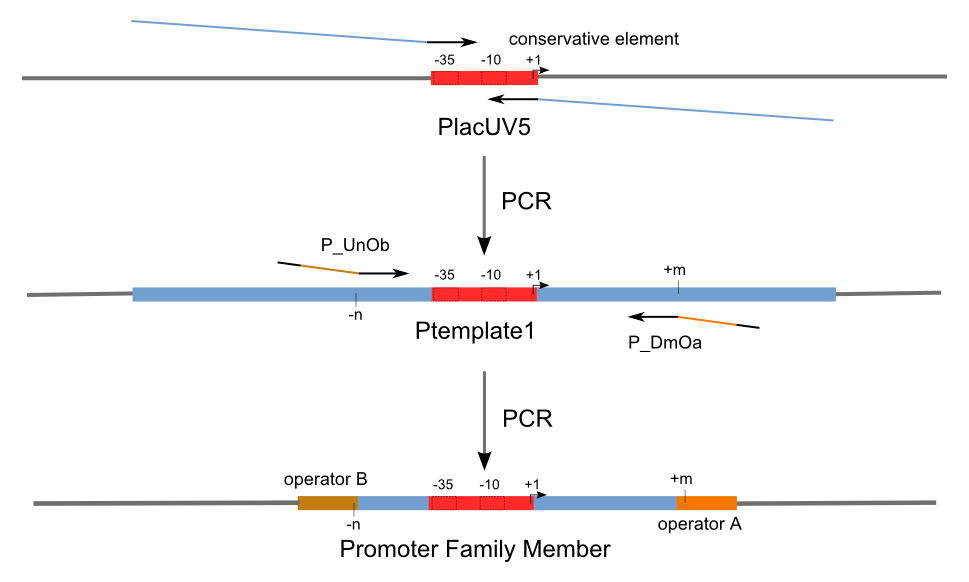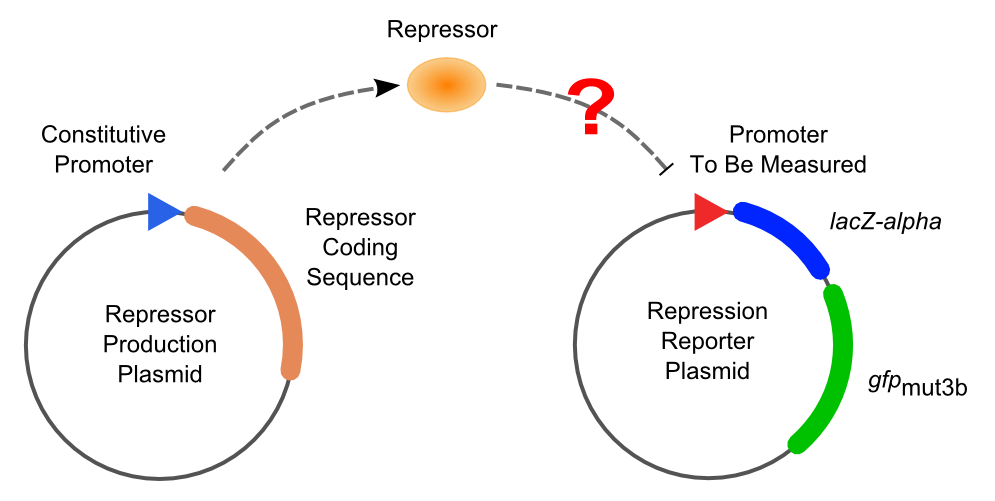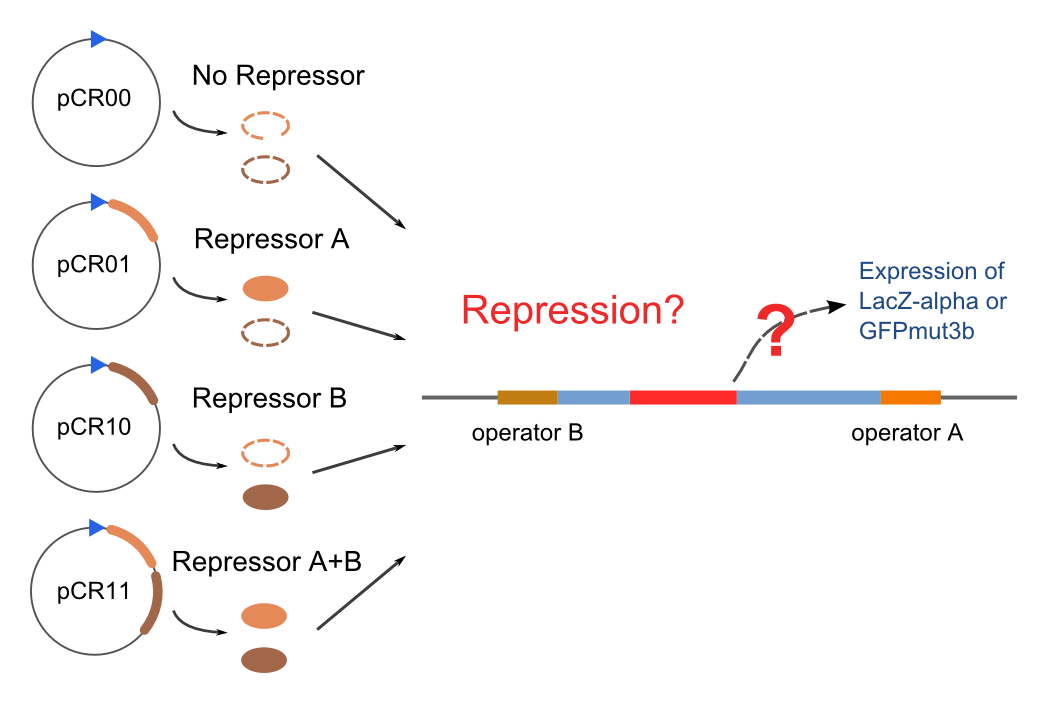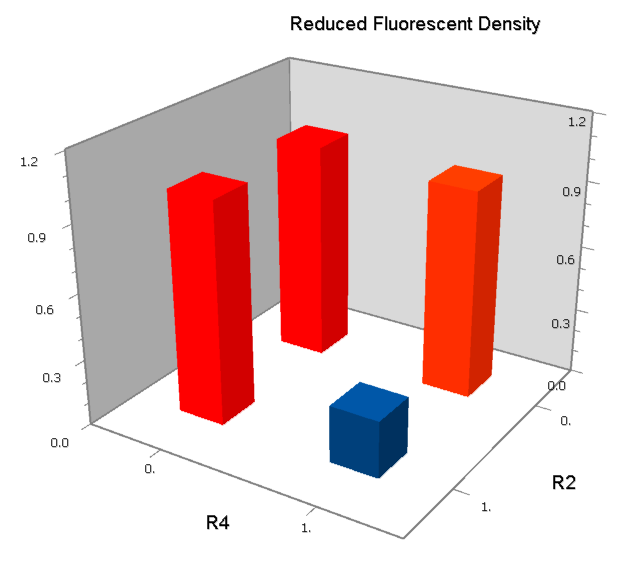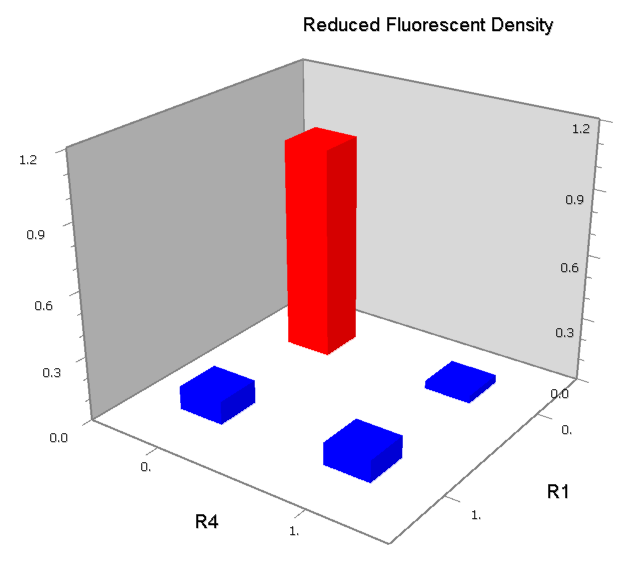USTC/Logic-Gate Promoters
From 2007.igem.org
m (→Build Up Promoter Family) |
m |
||
| Line 1: | Line 1: | ||
| - | = Cis-acting Bio-Logic Gates = | + | == Cis-acting Bio-Logic Gates == |
| - | + | In natural cells, combinational logic computation can be carried out by cis-acting elements []. Theoretically, dual repressors interacting on two adjacent operators can generate complex logic function as NAND, NOT and NOT []. But the parameters of these models are hard to measure, and seldom practical artificial logic promoters have been built up. In this project, we simplify these models, and try to predict possible pattern of logic promoters based on the experimental data. By means of PCR, a piece of DNA about 60 – 200bp (about 2.0nm in width, 20-70nm in length, smaller than transistors in nowadays VSLI) is able to be built up and to act as a logic gate. | |
| - | = | + | == Model == |
| - | = Repression Assay = | + | == Schemes of Bio-Logic Promoters == |
| - | == Build Up Promoter Family == | + | |
| + | == Repression Assay == | ||
| + | === Build Up Promoter Family === | ||
[[Image:USTC_PCRBuilding.png|thumb|400px|right|'''Figure ''' PCR Building]] | [[Image:USTC_PCRBuilding.png|thumb|400px|right|'''Figure ''' PCR Building]] | ||
| Line 19: | Line 21: | ||
Then the promoter fragments are digested with XbaI and BamHI and cloned into repression-reporter plasmid, which contains <i>lacZ</i> alpha fragment and <i>gfp</i> under the promoter insertion site. | Then the promoter fragments are digested with XbaI and BamHI and cloned into repression-reporter plasmid, which contains <i>lacZ</i> alpha fragment and <i>gfp</i> under the promoter insertion site. | ||
| - | == Solo-Repression Assay == | + | === Solo-Repression Assay === |
[[Image:SoloRepressionAssay.png|thumb|right|400px|'''Figure''' Solo-Repression]] | [[Image:SoloRepressionAssay.png|thumb|right|400px|'''Figure''' Solo-Repression]] | ||
<BR clear="both"> | <BR clear="both"> | ||
| - | == Co-Repression Assay == | + | === Co-Repression Assay === |
[[Image:USTC_CoRepressionAssay.png|thumb|right|400px|'''Figure''' Co-Repression]] | [[Image:USTC_CoRepressionAssay.png|thumb|right|400px|'''Figure''' Co-Repression]] | ||
<BR clear="both"> | <BR clear="both"> | ||
| - | = Final Results = | + | == Final Results == |
{| | {| | ||
| Line 38: | Line 40: | ||
<BR clear="both"> | <BR clear="both"> | ||
| - | = References = | + | == References == |
Revision as of 17:22, 21 October 2007
Contents |
Cis-acting Bio-Logic Gates
In natural cells, combinational logic computation can be carried out by cis-acting elements []. Theoretically, dual repressors interacting on two adjacent operators can generate complex logic function as NAND, NOT and NOT []. But the parameters of these models are hard to measure, and seldom practical artificial logic promoters have been built up. In this project, we simplify these models, and try to predict possible pattern of logic promoters based on the experimental data. By means of PCR, a piece of DNA about 60 – 200bp (about 2.0nm in width, 20-70nm in length, smaller than transistors in nowadays VSLI) is able to be built up and to act as a logic gate.
Model
Schemes of Bio-Logic Promoters
Repression Assay
Build Up Promoter Family
Firstly, we extend both sides of the conservative region for transcriptional initiation of PlacUV5[], including -35 box,-10 box and +1 starting point, with two non-sense sequence selected from random groups. The product is named as P_template1 as it is the template for the promoter family. These two non-sense sequence have three main characters:
- They will never include the restriction enzyme cutting sites that will be involved in the whole study;
- They will never include the recognition sites of RNA Polymerases and those of either of the two repressors;
- They will never present in complicated structures.
Secondly, another group of primers, of which the elongation region at 5’ end may contain a unique operator sequence or each, is applied at both ends of P_template1, equipping us with an according group of promoters with complete structures. These promoters can include variant operator sequences at different position in flank of the conservative region.
Then the promoter fragments are digested with XbaI and BamHI and cloned into repression-reporter plasmid, which contains lacZ alpha fragment and gfp under the promoter insertion site.
Solo-Repression Assay
Co-Repression Assay
Final Results
| File:USTC NestNOT.png Best NOT |
